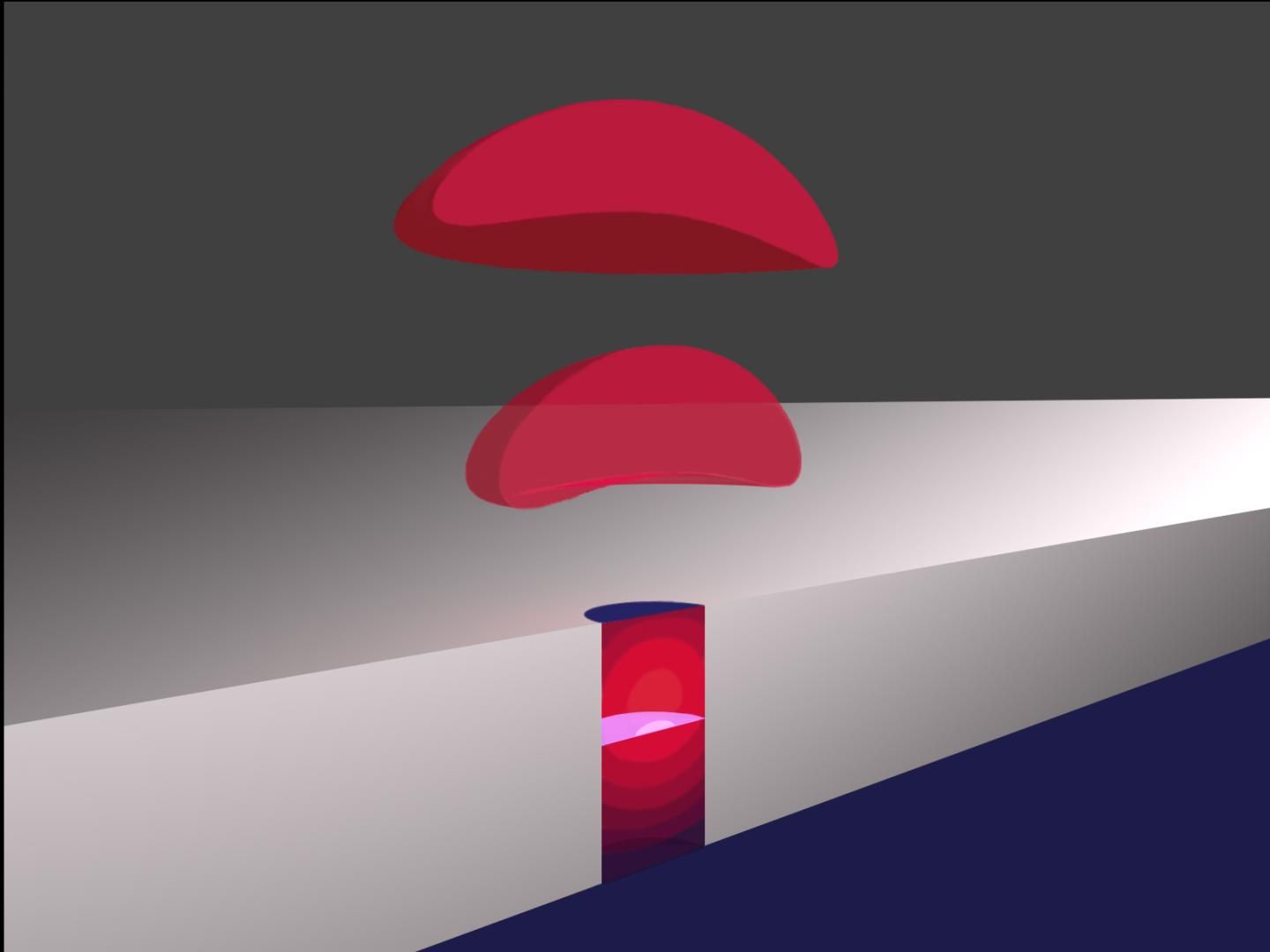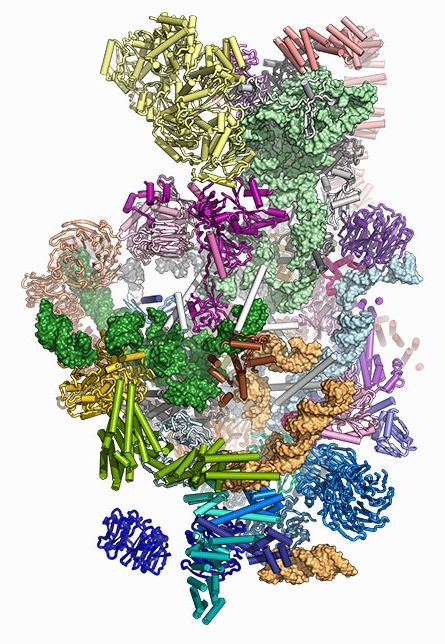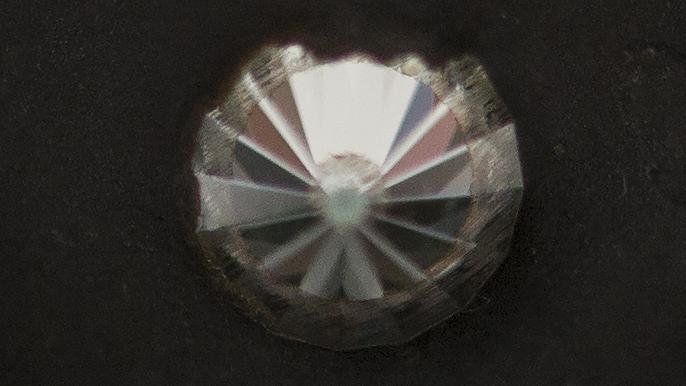https://youtube.com/watch?v=1ACoUCm8aTA
I believe nanodevices will operate as drug delivery systems, cancer treatment tools or tiny surgeons. Let me introduce you nanotechnology in healthcare.


Happy Holidays; happy end of the year, happy launch of next year, happy snow days, happy hot chocolate day, etc. Nonetheless, my gift to you this year is a Nanoscale Snowman.
Would a jewel-encrusted snowman make the perfect Christmas present? At only 5 nanometres in size, the price might be lower than you think. And it’s functional too, catalysing the splitting of water to make green hydrogen for fuel cells.
The nanoparticle, as imaged with the aberration-corrected scanning transmission electron microscopes, features eyes, nose and mouth of precious-metal platinum clusters embedded in a titanium dioxide face. Each platinum cluster typically contains 30 platinum atoms; within the whole nanoparticle there are approximately 1680 titanium atoms and 180 platinum atoms.
The nano-snowman formed spontaneously from a self-assembled platinum-titanium nanoparticle which was oxidised in air, drawing the titanium atoms out to the surface. The self-assembly occurred in a gas phase, cluster beam condensation source, before size-selection with a mass spectrometer and deposition onto a carbon surface for oxidation and then imaging. The mass of the snowman was 120,000 atomic mass units. Compared with a more conventional pure platinum catalyst particle, the inclusion of the titanium atoms offers two potential benefits: dilution of how much precious platinum is needed to perform the catalysis, and protection of the platinum cores against sintering (i.e. aggregation of the nanoparticles). The shell is porous enough to allow hydrogen through and the particles are functional in the hydrogen evolution reaction.

Researchers have developed a new type of light-enhancing optical cavity that is only 200 nanometers tall and 100 nanometers across. Their new nanoscale system represents a step toward brighter single-photon sources, which could help propel quantum-based encryption and a truly secure and future-proofed network.
Quantum encryption techniques, which are seen as likely to be central to future data encryption methods, use individual photons as an extremely secure way to encode data. A limitation of these techniques has been the ability to emit photons at high rates. “One of the most important figures of merit for single-photon sources is brightness—or collected photons per second—because the brighter it is, the more data you can transmit securely with quantum encryption,” said Yousif Kelaita, Nanoscale and Quantum Photonics Lab, Stanford University, California.
In the journal Optical Materials Express, Kelaita and his colleagues show that their new nanocavity significantly increased the emission brightness of quantum dots—nanometer-scale semiconductor particles that can emit single photons.

Scientists at The Rockefeller University have created the most detailed three-dimensional images to date of an important step in the process by which cells make the nano-machines responsible for producing all-important protein. The results, described December 15 in Science, are prompting the researchers to re-evaluate how they envision this early phase in the construction of ribosomes.
“The structure they determined, shown above, belongs to a particle formally called the “small subunit processome.” Before this particle can fulfill its destiny to become the smaller half of a complete ribosome, the RNA within it needs to be folded, tweaked, and cut.
“Initially, we thought of the small subunit processome as a product on an assembly line, with molecular workers arriving from outside, much like the robots that would put together a car. But that analogy no longer appears apt,” says senior author Sebastian Klinge, head of the Laboratory of Protein and Nucleic Acid Chemistry.

From laptops to cellphones, technology advances through the ever-increasing speed at which electric charges are directed through circuits. Similarly, speeding up control over quantum states in atomic and nanoscale systems could lead to leaps for the emerging field of quantum technology.
An international collaboration between physicists at the University of Chicago, Argonne National Laboratory, McGill University, and the University of Konstanz recently demonstrated a new framework for faster control of a quantum bit. First published online Nov. 28, 2016, in Nature Physics, their experiments on a single electron in a diamond chip could create quantum devices that are less prone to errors when operated at high speeds.

For all my Lab friends who utilize Spectrometers, drill bit fans as well as many of us QC fans. A new stronger syn. diamond being developed.
But you won’t find this diamond on any engagement rings — it will help cut through ultra-solid materials on mining sites.
Step aside, girls. Diamonds may now be a miner’s best friend, thanks to scientists from Australian National University (ANU).
Led by ANU professor Jodie Bradby, an international team is creating a hexagonal diamond, called Lonsdaleite, that’s predicted to be harder than a jeweler’s diamond. The researchers made nano-sized Lonsdaleite at 400 degrees Celsius (752 degrees Fahrenheit), effectively halving the temperature in which it can be formed in a lab. They’ve published their work in Scientific Reports.
A successful production trial by Australian battery technology innovator Nano-Nouvelle has proved its pioneering nanotechnology supports industrial-scale manufacture, with output rates 100 times faster.
The Sunshine Coast-based company is developing world-leading nanotechnology that can boost the energy storage capacity of lithium ion batteries by as much as 50 per cent. Lithium ion batteries are used in devices ranging from mobile phones and notebooks to and electric vehicles and home energy storage systems.
As well as proving its technology, Nano-Nouvelle has worked with companies worldwide to ensure its battery-boosting breakthrough is usable with today’s production lines.

This is a BIG DEAL in QC, and Russian Scientists solved it.
Abstract: Scientists from the Institute of Physics and Technology of the Russian Academy of Sciences and MIPT have let two electrons loose in a system of quantum dots to create a quantum computer memory cell of a higher dimension than a qubit (a quantum bit). In their study published in Scientific Reports, the researchers demonstrate for the first time how quantum walks of several electrons can help to implement quantum computation.
“By studying the system with two electrons, we solved the problems faced in the general case of two identical interacting particles. This paves the way toward compact high-level quantum structures,” comments Leonid Fedichkin, Expert at the Russian Academy of Sciences, Vice-Director for Science at NIX (a Russian computer company), and Associate Professor at MIPT’s Department of Theoretical Physics.
In a matter of hours, a quantum computer would be able to hack through the most popular cryptosystem used even in your web browser. As far as more benevolent applications are concerned, a quantum computer would be capable of molecular modeling that takes into account all interactions between the particles involved. This in turn would enable the development of highly efficient solar cells and new drugs. To have practical applications, a quantum computer needs to incorporate hundreds or even thousands of qubits. And that is where it gets tricky.

Researchers at University of California, Santa Barbara, have designed a functional nanoscale computing element that could be packed into a space no bigger than 50 nanometres on any side.
In 1959, renowned physicist Richard Feynman, in his talk “Plenty of Room at the Bottom” spoke of a future in which tiny machines could perform huge feats. Like many forward-looking concepts, his molecule and atom-sized world remained for years in the realm of science fiction. And then, scientists and other creative thinkers began to realise Feynman’s nanotechnological visions.

Excercise is the best low cost activity you can do as part of your personal longevity strategy. Here we see data showing it can improve resistance to oxidative stress.
Researchers digging deeper into the mechanisms by which exercise produces benefits have found that it improves the resistance of blood vessels to oxidative stress. With age the presence of oxidizing molecules and oxidative modification of proteins, preventing correct function, increases for reasons that include damage to mitochondria, the power plants of the cell. Oxidative damage to molecular machinery is somewhere in the middle of the chain of cause and effect that starts with fundamental forms of damage to cells and tissues and spirals down into age-related diseases. Near all of this oxidation is repaired very quickly, the damaged molecules dismantled and recycled, but in most contexts more of it over the long term is worse than less of it.
Quote: